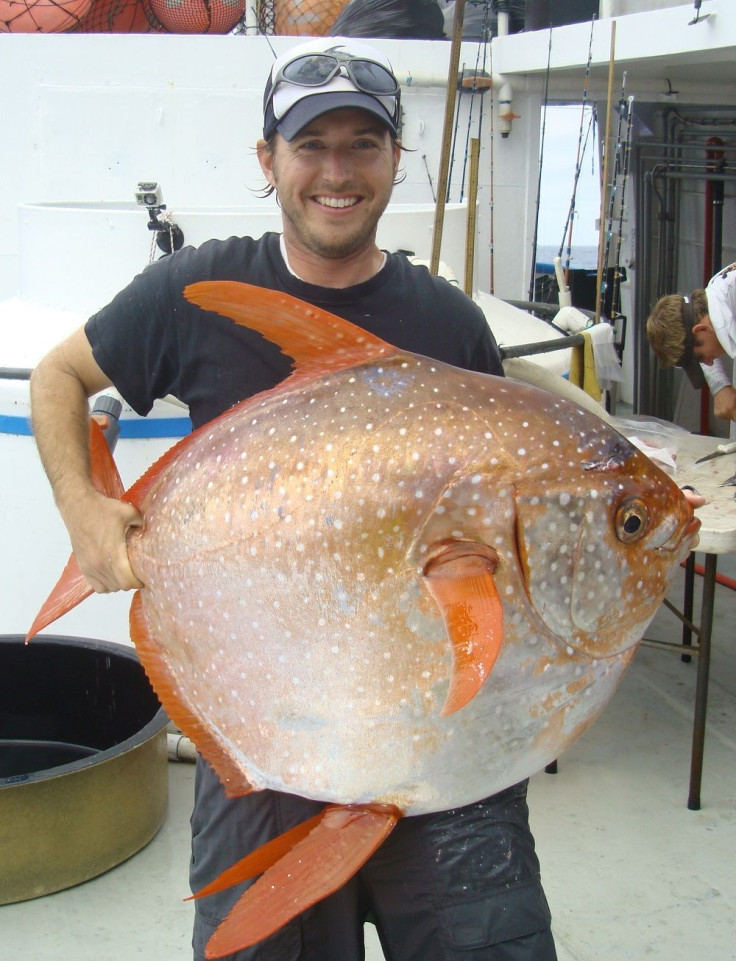Unique Blood Vessels In Gills Make Opah First Warm-Blooded Fish Discovered, Says NOAA Scientists

A unique set of blood vessels on its gills allowed the opah, a deepwater predatory fish, to circulate warm blood, making it the first warm-blooded fish discovered by scientists from the National Oceanic and Atmospheric Administration, or NOAA. The curiosity of NOAA scientists was piqued by the opah’s characteristics.
It includes having a large heart, a lot of muscles, large eyes and spending all of its time in the deepest and coldest places in the ocean, which are the features of active predators that move swiftly, said Heidi Dewar, one of the authors of the NOAA study. But what distinguishes the opah is that while living at those depths, it does not move slowly and waits for its prey to come near as most predatory fish are.
Its warm blood is the result of the opah’s way of swimming, which is by swiftly moving its pectoral fins instead of undulating its body. The movement generates heat and makes the incoming blood in its vessels warm after it has circulated through the opah’s body, explains Nicholas Wegner, the paper’s lead author and a researcher at NOAA, reports the Washington Post.
Also responsible for the warm blood is the tight bonding of the opah’s two sets of blood vessels which results in the incoming blood vessels warming up the outgoing blood before it moves anywhere else. With this counter-current heat exchange set-up, warm blood is delivered in the entire body of the opah, Wegner said.
According to the report, there are other fish, such as the tuna, which has blood vessels designed in a similar way as the opah, but the warm blood is only circulated in some body parts like the swimming muscles, liver and eyes. Because of the opah’s unique blood vessel design, it does not lose its body heat to the cold environment where it lives, points out the NOAA scientists.
When the NOAA researchers tested the fish, the opah kept a core body temperature warmed by 5 degrees Celsius than the water surrounding it. Some scientists, though, who are not part of NOAA, believe the opah is only partly warm blooded because the edge of its body is colder.
Dewar said the opah, which belongs to the species Lampris guttatus, they studied are found off the West Coast of North America. NOAA’s next move is to study the opah found in other areas to verify if it also have specialised gills.
Also known as moonfish, the flattened disc-shaped opah has bright red fins. It could grow up to two metres long and weigh up to 80 kilogrammes. Because it is a solitary fish, the opah is usually not caught in large numbers, according to CNN.
To contact the writer, email: vittoriohernandez@yahoo.com





















